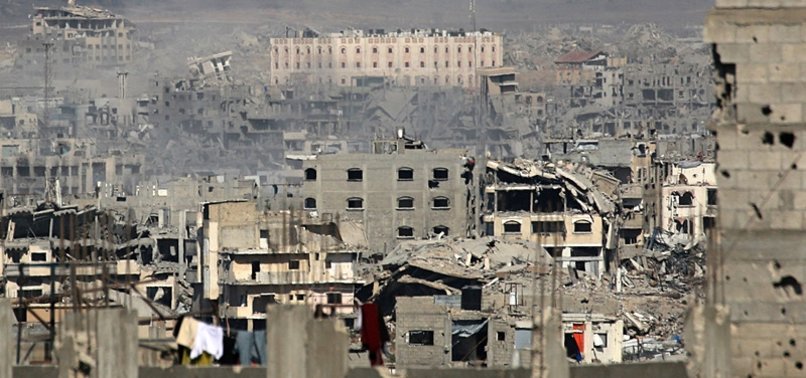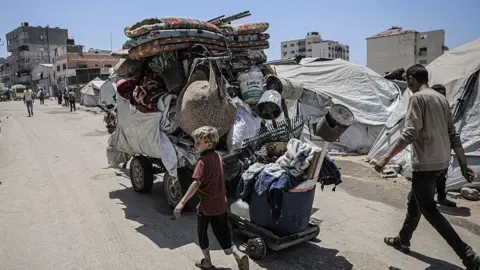Introduction
The Israel Defense Forces (IDF) have ordered the northern Gaza evacuation of northern Gaza residents, including many from Gaza City and Jabalia, as military efforts intensify. This strategic move comes in parallel with former US President Donald Trump renewing calls for a ceasefire and urgent release of hostages.
Details of the Evacuation Order

The IDF has instructed Palestinian residents to relocate south to the al‑Mawasi coastal area near Khan Younis. Military sources explain this order is in preparation for broader operations targeting Hamas infrastructure in northern neighborhoods, including Zeitoun and Beit Lahia. Residents report tank movements and emergency alerts in affected zones (Reuters) northern Gaza evacuation.
Civilian Casualties in ‘Safe Zones’
Despite being labeled “safe,” the al‑Mawasi area has faced deadly strikes. Over the past week, at least five members of the Maarouf family—three children included—were killed in their tent encampment. Their mother stated, “We were sleeping … they bombed us,” a scene denounced by local medics as a failure of safer relocation zones (Reuters) northern Gaza evacuation.
Trump Renewing Ceasefire Push
On Truth Social, Trump urged the urgent need “to make the deal in northern Gaza evacuation—and get the hostages back.” He emphasized Israel’s PM Netanyahu was “right now negotiating a deal” with Hamas and expressed hope for a ceasefire within a week (Time).

Mediators from the US, UK, Egypt, and Qatar have intensified talks. The goal: a multi-stage agreement linking prisoner exchanges, Gaza demilitarization, and Israel’s military drawdown.
Strategic and Military Context
The IDF asserts its operations target militant hideouts and infrastructure. In conjunction with evacuation notices, dozens of airstrikes have leveled buildings in northern Gaza, displacing tens of thousands. The IDF stresses it complies with international law and attempts to minimize civilian harm, though civilians report otherwise.
Sergeant Yisrael Natan Rosenfeld, an IDF soldier, was killed in combat in northern Gaza, underscoring the continued flow of military operations in the region.
Humanitarian Crisis Deepens
With over 2.3 million people affected in Gaza, the displacement is catastrophic. The UN warns that virtually no district in Gaza remains safe for civilians. Humanitarian workers describe severe aid distribution challenges amid ongoing bombardments and blocked access.

UNRWA’s communications director, Juliette Touma, labeled the US–Israeli-backed Gaza Humanitarian Foundation “a killing field,” noting aid distribution must be managed by competent, neutral agencies to meet urgent needs (UNRWA).
Legal and Ethical Questions
Rights organizations argue forced mass evacuations may violate international humanitarian law, particularly if safe zones are bombed. Critics highlight previous hospital evacuations in Gaza, after which civilian deaths followed emergency relocation orders.
What Lies Ahead?
Mediators continue shuttle diplomacy, but Israel’s ongoing military expansion complicates prospects. Trump frames diplomatic pauses as leverage to secure hostage release and exert pressure on Netanyahu’s lead.
For civilians, the next days may determine whether they reach relative safety in the south or remain trapped between conflict and insufficient aid.
Conclusion

Israel’s evacuation directive and Trump’s diplomatic push represent two simultaneous forces. As military tactics escalate and diplomatic channels move, civilian welfare and reliable safety guarantees must be central. Without these, both ceasefire efforts and humanitarian protections risk becoming mere rhetoric.🔗 Short URL: bit.ly/NorthernGazaEvacs
👉 Read more: Gaza Humanitarian Crisis Tracker









